Class 9 Civics Chapter 2 Notes - Constitutional Design
| Table of contents |

|
| Introduction |

|
| Democratic Constitution in South Africa |

|
| Why do we need a Constitution? |

|
| Making of the Indian Constitution |

|
| Guiding Values of the Indian Constitution |

|
| Difficult Words |

|
Introduction
Constitutional design refers to the process of creating a constitution that outlines the framework for governance in a country.
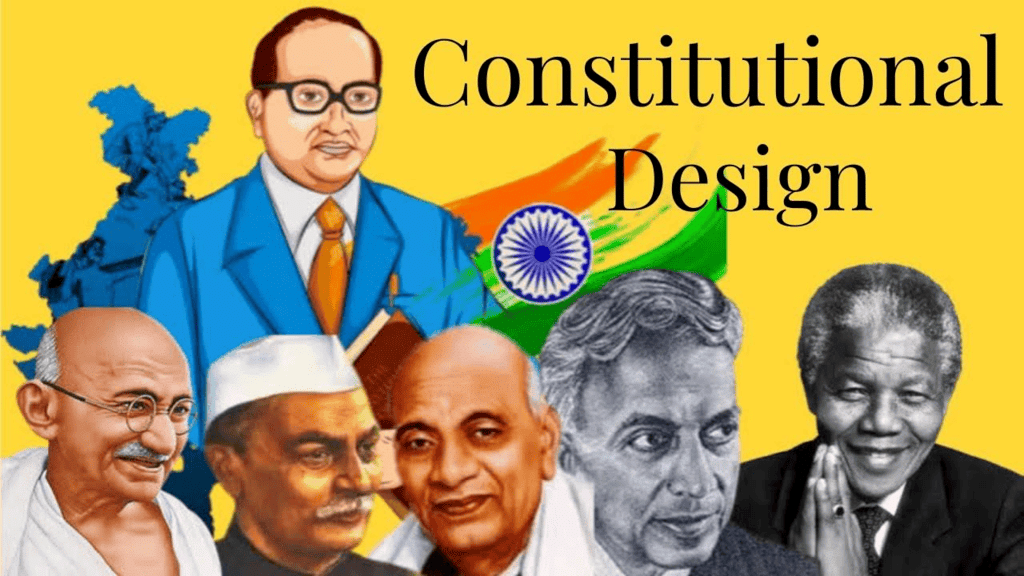
- These rules are not just for the people but for the government as well.
- They form the constitution, which is the foundation of every democracy.
- In this chapter, Constitutional Design, we explore why constitutions are essential and how they come into existence.
- We will dive into questions like who creates these constitutions, what values they represent, and how they can adapt to changing times.
- Through the example of South Africa's journey to democracy, we will see how constitutions can transform nations.
- Finally, we'll turn our attention to the making of the Indian Constitution and its guiding principles that shape the lives of citizens and the functioning of the government.
Democratic Constitution in South Africa
- Nelson Mandela once declared:
“I have fought against white domination and I have fought against black domination. I have cherished the ideal of a democratic and free society in which all persons live together in harmony and with equal opportunities. It is an ideal which I hope to live for and to achieve. But if needs be, it is an ideal for which I am prepared to die.” - These words were spoken during his trial for treason by the white South African government.
- In 1964, Nelson Mandela and seven other leaders were sentenced to life imprisonment for resisting the apartheid regime in South Africa.
- Mandela was imprisoned for the next 27 years in Robben Island, one of the most feared prisons in South Africa.
Struggle Against Apartheid
 Signs of Apartheid
Signs of Apartheid
- Apartheid was a system of racial discrimination that existed only in South Africa, enforced by white Europeans.
- In the 17th and 18th centuries, European trading companies captured South Africa using force, similar to how they took control of India.
- Unlike India, a large number of white Europeans settled permanently in South Africa and became its rulers.
- The apartheid system divided people based on their skin colour:
- Black South Africans were the native population and formed about three-fourths of the total population.
- People of mixed race were referred to as ‘coloured’.
- There were also Indians who had migrated to South Africa.
- White rulers considered all non-white groups inferior and denied them voting rights.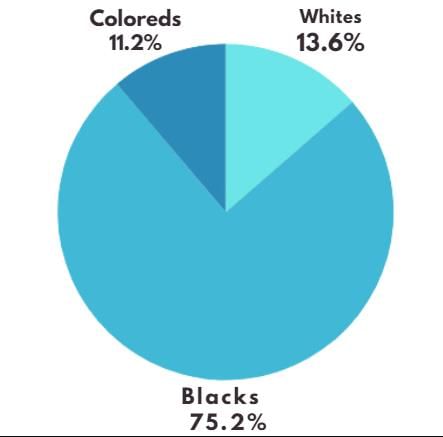 Population of South Africa
Population of South Africa - Apartheid was especially harsh on black South Africans:
- They were banned from living in areas meant for whites.
- They could only work in white areas with special permits.
- Facilities like trains, buses, hospitals, schools, libraries, cinemas, beaches, and toilets were segregated—whites and blacks had to use separate ones. - They were not allowed to enter white churches, form associations, or protest against discrimination.
- From 1950 onwards, the blacks, coloured people, and Indians began resisting apartheid through protests and strikes.
- The African National Congress (ANC) led this resistance. It was a large organisation that included:
- Workers’ unions
- The Communist Party
- Even some white South Africans who opposed racism - Globally, many countries condemned apartheid as a form of injustice and racism.
- However, the white-dominated government responded with violence, often arresting, torturing, and killing thousands of black and coloured people.
Towards a New Constitution

- As the number of protests and struggles against apartheid increased, the South African government realized it could no longer control the black population using force. So, the white government started changing its approach:
a) Unfair and discriminatory laws were removed.
b) Bans on political parties and restrictions on the media were lifted.
c) Nelson Mandela was finally released from prison after 28 years. - On the night of 26 April 1994, South Africa got a new national flag and became a free and democratic country. The apartheid rule officially ended, and a new government was formed with people of all races.
How did this happen peacefully?
- Nelson Mandela, the first President of democratic South Africa, explained that even though people had been enemies, they were ready to forgive each other and believed in the goodness of others. This helped them move from hatred to unity.
- After becoming free, black leaders encouraged everyone, especially fellow black citizens, to forgive the white rulers for their past crimes.
- They wanted to build a new South Africa that treated everyone equally—men and women, black and white—with values of democracy, justice, and human rights.
- Both sides—the ruling party that had oppressed people and the freedom fighters—worked together to write a new constitution. After two years of discussion, they created one of the best constitutions in the world.
- It gave South Africans the most complete set of rights seen in any country. They also agreed:
a) No one should be left out, no matter what they did in the past.
b) Everyone should help solve the country’s problems together. - This spirit is reflected in the Preamble of the South African Constitution. Today, South Africa is an example of a successful democracy.
- Once rejected by the world for being unfair and racist, it is now praised for its democratic values. This change happened because the people of South Africa were determined to work together and turn their painful history into a hopeful future.
Nelson Mandela said:
"The Constitution talks about both the past and future. It is a promise that we will never repeat the racism and cruelty of the past. But it also shows our hope to turn South Africa into a country truly shared by all people — black and white, women and men."
 Nelson Mandela
Nelson Mandela
Why do we need a Constitution?
- The example of South Africa helps us understand the importance of a constitution.
- In South Africa, the white minority (oppressors) and the black majority (oppressed) decided to live together as equals in a new democracy.
- But it was hard for both groups to trust each other because of past injustice and fear.
- Each group wanted to protect its own interests:
- The black majority wanted to ensure majority rule and social and economic rights.
- The white minority wanted to protect its property and privileges. - After long discussions, both sides agreed to a compromise:
- Whites accepted one person, one vote and majority rule.
- They also accepted basic rights for poor people and workers.
- Blacks agreed that majority rule would not be absolute, and that the property of the white minority would not be taken away. - This compromise was not easy, and people still worried:
- What if one side broke the agreement later?
- How could they make sure everyone followed the rules? - The answer was to write down the rules clearly so that everyone follows them – this is called a constitution.
What Does a Constitution Do?
- A constitution is a set of written rules that everyone in a country agrees to follow.
- These rules explain:
a) How the leaders (rulers) will be chosen.
b) What powers the government will have and what it cannot do.
c) What rights the citizens will have. - These rules must be protected so that the winning group in an election can’t easily change them.
- This is what South Africans did – they agreed on basic rules that no government can ignore, and these rules became their constitution.
Do Only Countries Need Constitutions?
- Not just South Africa – every country needs a constitution because different people have different views and interests.
- Even if their differences are not as serious as in South Africa, they still need clear rules to live and work together.
- This doesn’t apply only to countries. Clubs, societies, and political parties also need constitutions to function smoothly.
What is a Constitution?
A set of written rules agreed upon by all people in a country. The highest law that:
- Defines the relationship between citizens and government.
- Defines the relationship among citizens themselves.
Main Functions of a Constitution:
1. Builds Trust and Unity: Helps different groups of people live together peacefully.
2. Explains Government Structure: Tells us how the government will be formed and who will take what decisions.
3. Limits Government Power: Ensures the government does not misuse power and clearly defines the rights of the people.
4. Expresses People's Dreams: Shows what kind of society people want to create – fair, equal, and just.
Do All Countries Have Constitutions?
- Not all countries with constitutions are democratic. But all democratic countries must have a constitution.
- Example:
- After winning independence from Britain, America created a constitution.
- After their revolution, the French people also adopted a democratic constitution. - Since then, it has become common practice for democracies to have a written constitution.
Making of the Indian Constitution
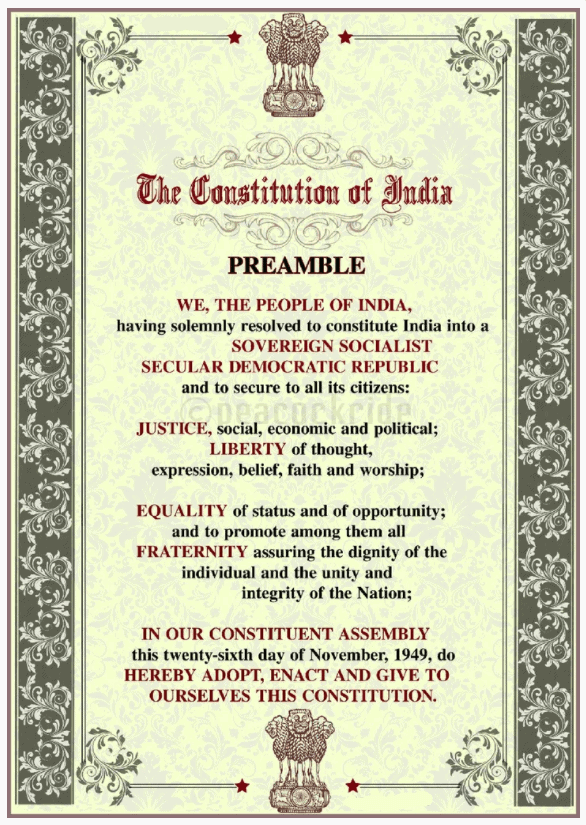 Preamble of the Indian Constitution
Preamble of the Indian Constitution- The making of the constitution for a huge and diverse country like India was not an easy affair.
- The people of India were emerging from the status of subjects to that of citizens.
- The country was born through a partition on the basis of religious differences. At least ten lakh people were killed on both sides of the border in partition-related violence.
- The British had left it to the rulers of the princely states to decide whether they wanted to merge with India or with Pakistan or remain independent. The merger of these princely states was a difficult and uncertain task.
- When the Constitution was being written, the makers of the Constitution had anxieties about the present and the future of the country.
The Path to Constitution
- Existing Consensus: Unlike South Africa, India already had a broad agreement on democratic principles before drafting the Constitution.
- Foundational Documents: Key documents, like the 1928 Motilal Nehru draft and the 1931 Karachi resolution, laid the groundwork for universal adult franchise and minority rights.
- Colonial Experience: The experience with British legislative institutions, especially the 1937 Provincial Legislature elections, helped shape India's own governance structures.
- Global Inspiration: Indian leaders were influenced by global ideals like the French Revolution and U.S. Bill of Rights but adapted them to suit India's unique needs.
- Thoughtful Adaptation: Years of deliberation ensured that the Constitution was not a mere imitation but a well-considered document tailored for India.
The Constituent Assembly
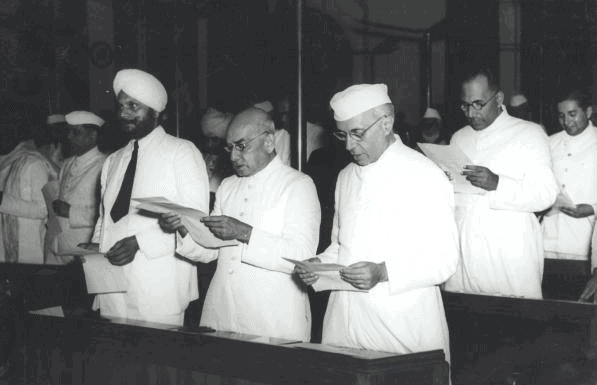 First Constituent Assembly
First Constituent Assembly
- The Constitution of India was framed by a Constituent Assembly set up under the Cabinet Mission Plan, of 1946.
- The assembly consisted of 389 members representing provinces (292), states (93), the chief commissioner provinces (3) and Baluchistan (1).
- Formation: The Constituent Assembly was formed to draft the Indian Constitution. Elections were held in July 1946.
- The assembly held its first meeting on December 6, 1946. It elected Dr. Rajendra Prasad as its Chairman. Soon after the country was divided into India and Pakistan.
- The Constituent Assembly was also divided into the Constituent Assembly of India and that of Pakistan. The Constituent Assembly that wrote the Indian Constitution had 299 members.
- The Assembly adopted the Constitution on 26 November 1949 but it came into effect on January 26, 1950. To mark this day we celebrate January 26 as Republic Day every year.
Why should we accept the Constitution made by the Constituent Assembly more than 50 years ago?
- The Indian Constitution represents the collective agreement of many people at the time, not just a few individuals.
- It has been respected and upheld, unlike some countries that had to completely rewrite their constitutions.
- No significant group or political party has ever questioned the legitimacy of the Constitution itself, which is quite remarkable.
- The Constituent Assembly was not directly elected by all citizens due to the absence of universal suffrage but was elected by members of the Provincial Legislatures.
- This ensured a diverse representation from various regions, languages, castes, classes, religions, and occupations.
- The assembly worked in an orderly and transparent manner, agreeing on fundamental principles.
- A committee headed by Dr. B.R. Ambedkar was responsible for drafting the Constitution.
- They meticulously discussed the draft, considering over two thousand amendments.
- The discussions were meticulously documented in the ‘Constituent Assembly Debates,’ which span 12 volumes.
- These debates provide detailed explanations for each part of the Constitution and assist in its interpretation.
Guiding Values of the Indian Constitution
We will be exploring the specific rules and provisions of the Constitution related to various topics. But before that, it's important to understand the basic philosophy behind our Constitution. There are two ways to do this:
a) By looking at the opinions of key leaders about the Constitution
b) By reading what the Constitution itself says.
The Preamble helps us understand this philosophy. Let’s look at both approaches, one at a time.
The Dream and the Promise
You might have noticed that one important name is missing from the list of Constitution makers—Mahatma Gandhi. He was not a part of the Constituent Assembly. However, many members were inspired by his ideas. In 1931, through his magazine Young India, Gandhi had expressed what he hoped the Constitution would achieve which is as follows:
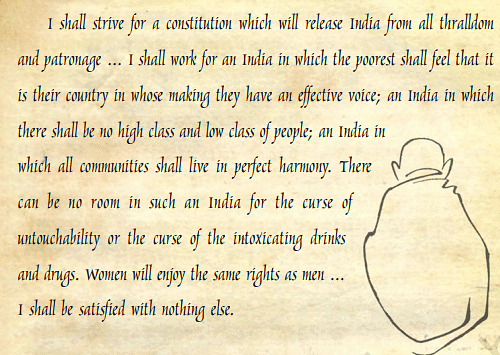
Dr. Ambedkar also dreamed of an India free from all forms of inequality and played a major role in framing the Constitution. However, his approach to tackling inequality differed from that of Mahatma Gandhi. He strongly disagreed with Gandhi’s ideas and often expressed sharp criticism. In his final speech to the Constituent Assembly, he clearly voiced his concerns which is:
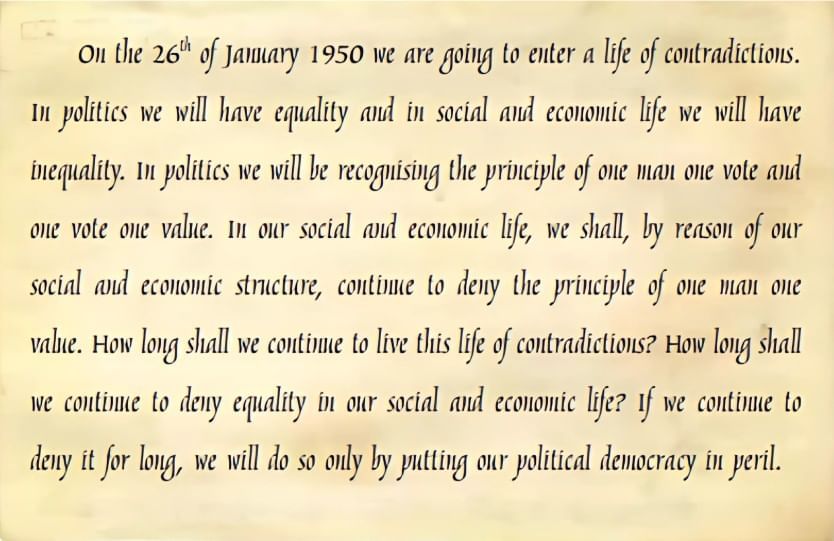
Finally, let us turn to Jawaharlal Nehru, giving his famous speech to the Constituent Assembly at the stroke
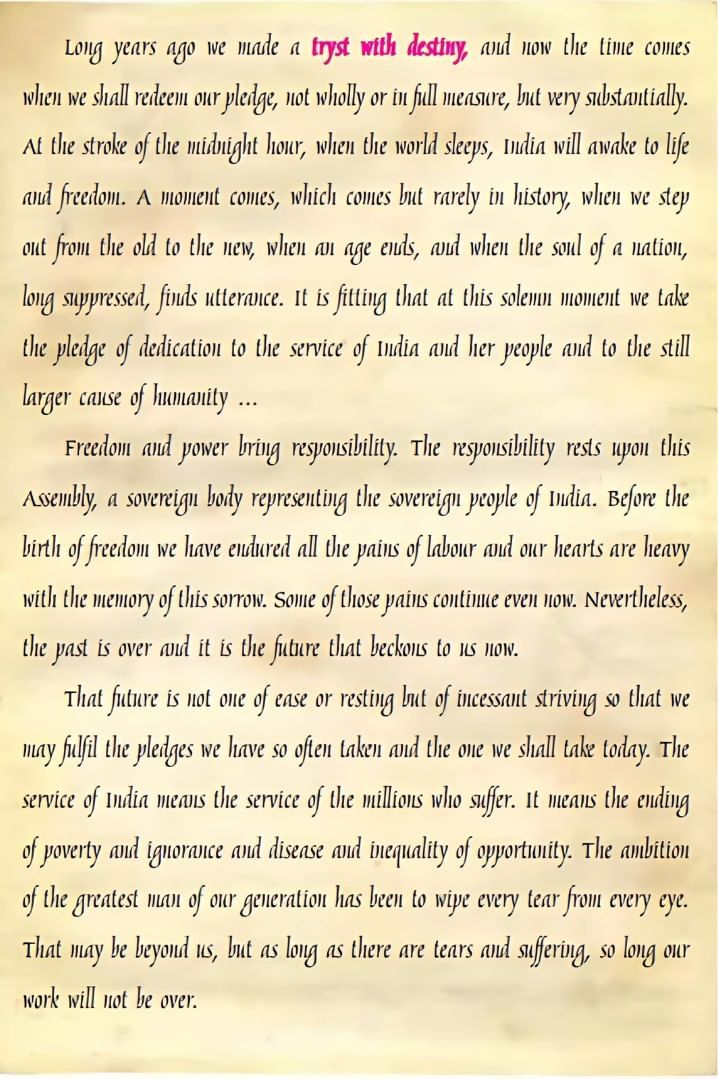
Philosophy of the Constitution
Values that inspired and guided the freedom struggle and were in turn nurtured by it, formed the foundation for India’s democracy. Given below are the values embedded in the Preamble of the Indian Constitution.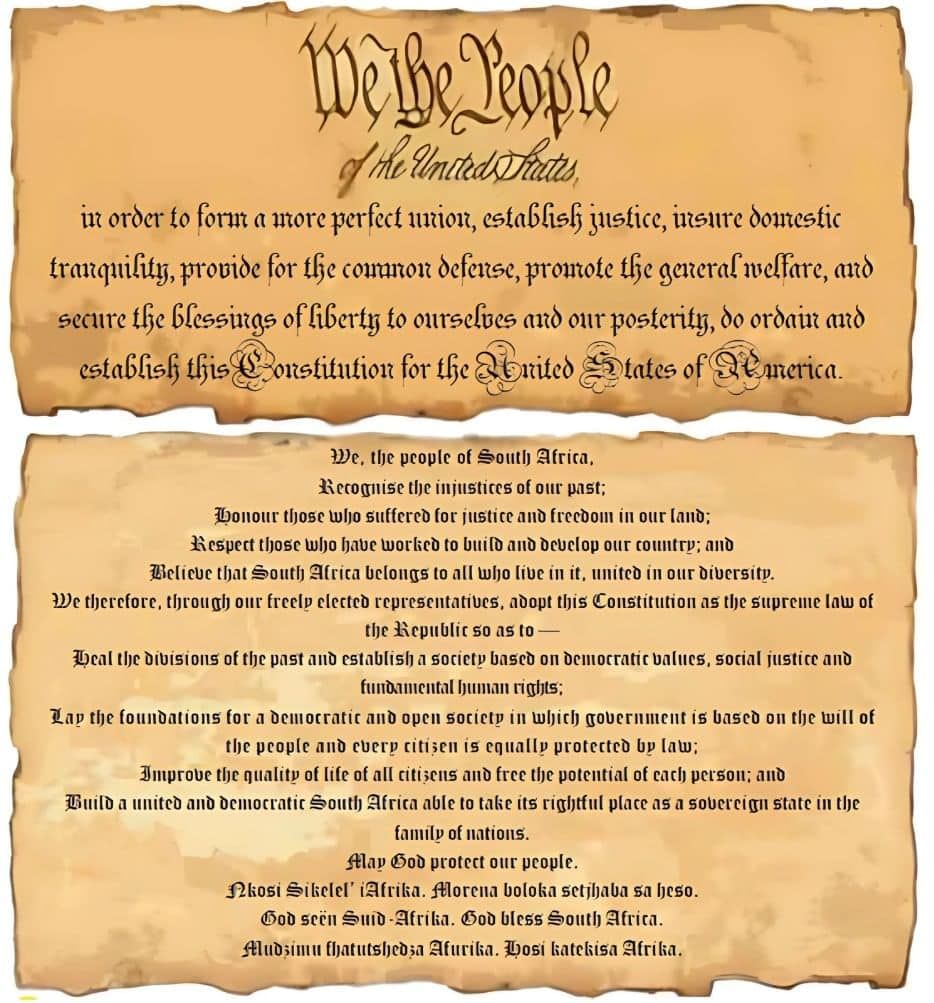
- We, the People of India: The Constitution has been drawn up and enacted by the people through their representatives, and not handed down to them by a king or any outside powers.
- Sovereign: People have the supreme right to make decisions on internal as well as external matters. No external power can dictate the Government of India.
- Socialist: Wealth is generated socially and should be shared equally by society. The government should regulate the ownership of land and industry to reduce socio-economic inequalities.
- Secular: Citizens have complete freedom to follow any religion. But there is no official religion. The government treats all religious beliefs and practices with equal respect.
- Democratic: A form of government where people enjoy equal political rights, elect their rulers and hold them accountable. The government is run according to some basic rules.
- Republic: The head of the state is an elected person and not a hereditary position.
- Justice: Citizens cannot be discriminated against on the grounds of caste, religion and gender. Social inequalities have to be reduced. The government should work for the welfare of all, especially of the disadvantaged groups.
- Liberty: There are no unreasonable restrictions on the citizens in what they think, how they wish to express their thoughts, and the way they wish to follow up their thoughts in action.
- Equality: All are equal before the law. The traditional social inequalities have to be ended. The government should ensure equal opportunity for all.
- Fraternity: All of us should behave as if we are members of the same family. No one should treat a fellow citizen as inferior.
Institutional Design
- A constitution is not just a document that lists values and ideals.
- It mainly turns these values into actual systems and rules for running the country.
- The Indian Constitution contains detailed instructions about how the government should work.
- It is a very long and detailed document.
- Because society and people's needs keep changing, the Constitution needs to be updated regularly.
- The people who wrote the Indian Constitution believed that it should match the hopes and changes of society.
- They did not treat it as a holy or unchangeable law.
- So, they included ways to make changes in the Constitution when needed.
- These changes are known as constitutional amendments.
- The Constitution uses formal legal language to describe how institutions should work.
- If someone reads it for the first time, it might be hard to understand.
- However, the basic structure of how it works is not too hard to grasp.
- Like other constitutions, the Indian Constitution explains how leaders are chosen to govern the country.
- It also explains how much power each leader or group will have and what decisions they can make.
- It sets boundaries on the government's powers by giving citizens certain rights that cannot be taken away.
Some of the members of the Constituent Assembly were:

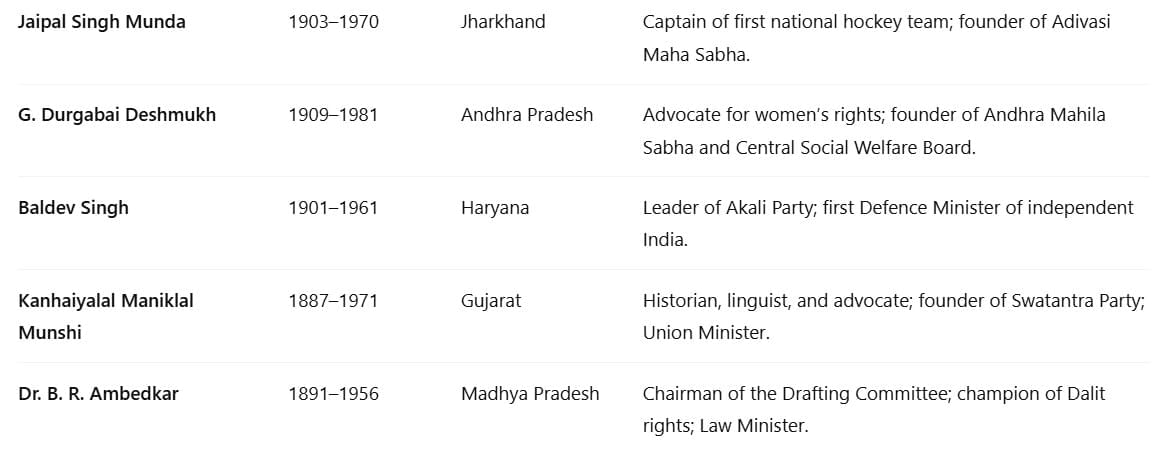

Difficult Words
- Apartheid: A policy or system of segregation or discrimination on grounds of race, which was formerly practiced in South Africa against non-white citizens.
- Constituent Assembly: A body composed of members elected to draft or adopt a new constitution or reform an existing one.
- Universal Adult Suffrage: The right of citizens in a given society who are entitled to vote in an election to do so; typically, this term refers to all adults, without regard to race, sex, belief, or social status.
- Preamble: An introductory statement in a document that explains the document's purpose and underlying philosophy.
- Sovereign: Possessing supreme or ultimate power. In the context of a country, it means independent and having the right to govern itself.
- Secular: The principle of separation of the government from religious institutions.
- Socialist: In the context of the Indian Constitution, it refers to an economic system where the government or the public as a whole has ownership and control of the means of production and distribution of goods.
- Republic: A state in which supreme power is held by the people and their elected representatives, and which has an elected or nominated president rather than a monarch.
- Fraternity: A sense of brotherhood and unity among all citizens.
- Amendments: Changes or additions that are made to a constitution or a law.
- Bill of Rights: A formal declaration of the legal and civil rights of the citizens of any state, country, federation, etc.
- Judiciary: The judicial authorities of a country; the system of courts that interprets and applies the law in legal cases.
- Multi-party System: A system of government in which multiple political parties have the capacity to gain control of government offices, independently or in coalition.
- Parliamentary Democracy: A form of government in which the executive derives its legitimacy from its ability to command the support of the legislature, typically a parliament, to which it is accountable.
- Constitutional Monarchy: A system of government in which a monarch (king or queen) acts as the Head of State within the parameters of a constitution.
|
55 videos|525 docs|78 tests
|
FAQs on Class 9 Civics Chapter 2 Notes - Constitutional Design
| 1. What is the significance of a democratic constitution in South Africa? |  |
| 2. Why is a constitution essential for a country? |  |
| 3. What were the key influences in the making of the Indian Constitution? |  |
| 4. What are the guiding values of the Indian Constitution? |  |
| 5. What are some difficult words related to constitutional design and their meanings? |  |





















